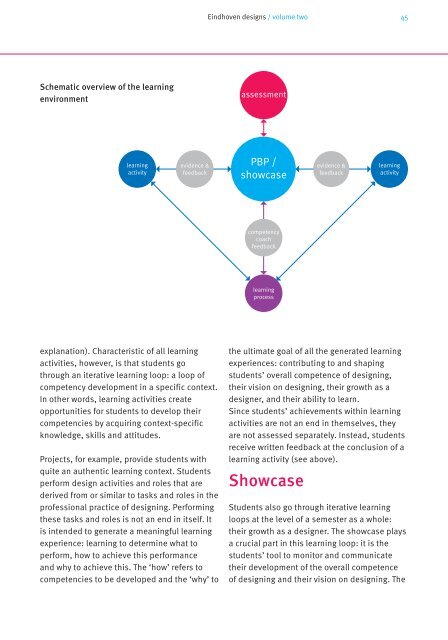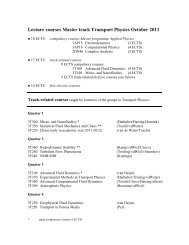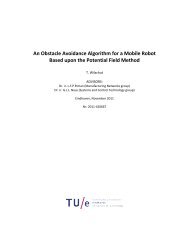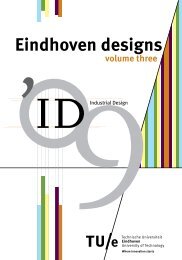Education guide 'Eindhoven designs' - Technische Universiteit ...
Education guide 'Eindhoven designs' - Technische Universiteit ...
Education guide 'Eindhoven designs' - Technische Universiteit ...
You also want an ePaper? Increase the reach of your titles
YUMPU automatically turns print PDFs into web optimized ePapers that Google loves.
Eindhoven designs / volume two 45<br />
Schematic overview of the learning<br />
environment<br />
assessment<br />
learning<br />
activity<br />
evidence &<br />
feedback<br />
PBP /<br />
showcase<br />
evidence &<br />
feedback<br />
learning<br />
activity<br />
competency<br />
coach<br />
feedback<br />
learning<br />
process<br />
explanation). Characteristic of all learning<br />
activities, however, is that students go<br />
through an iterative learning loop: a loop of<br />
competency development in a specific context.<br />
In other words, learning activities create<br />
opportunities for students to develop their<br />
competencies by acquiring context-specific<br />
knowledge, skills and attitudes.<br />
Projects, for example, provide students with<br />
quite an authentic learning context. Students<br />
perform design activities and roles that are<br />
derived from or similar to tasks and roles in the<br />
professional practice of designing. Performing<br />
these tasks and roles is not an end in itself. It<br />
is intended to generate a meaningful learning<br />
experience: learning to determine what to<br />
perform, how to achieve this performance<br />
and why to achieve this. The ‘how’ refers to<br />
competencies to be developed and the ‘why’ to<br />
the ultimate goal of all the generated learning<br />
experiences: contributing to and shaping<br />
students’ overall competence of designing,<br />
their vision on designing, their growth as a<br />
designer, and their ability to learn.<br />
Since students’ achievements within learning<br />
activities are not an end in themselves, they<br />
are not assessed separately. Instead, students<br />
receive written feedback at the conclusion of a<br />
learning activity (see above).<br />
Showcase<br />
Students also go through iterative learning<br />
loops at the level of a semester as a whole:<br />
their growth as a designer. The showcase plays<br />
a crucial part in this learning loop: it is the<br />
students’ tool to monitor and communicate<br />
their development of the overall competence<br />
of designing and their vision on designing. The

















